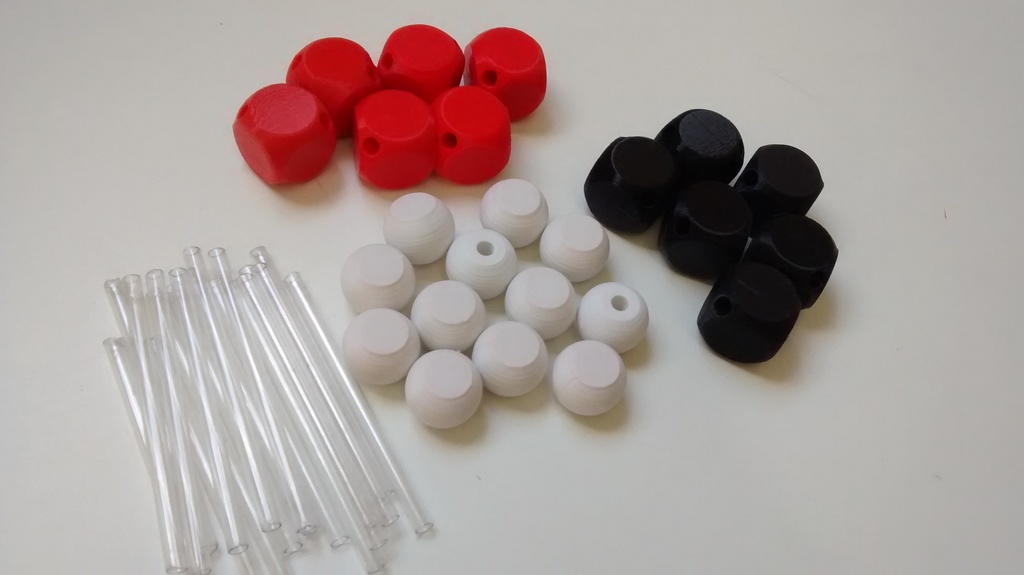
Simple Molecular Model
thingiverse
Here is another molecular model. I crafted my own design based on a clear vision - simplicity, ease of printing, connectivity, and customization. This concept emerged while teaching geometry in General Chemistry I and Instrumentation for Teaching Chemistry in 2019. The experience of students interacting with real molecule models differs significantly from virtual experiences. The most critical aspect of any model is the atom or connector. It's unnecessary for connectors to be spherical in shape. In my experience, color plays a more significant role than shape. I designed them to be easily printed. There are four connectors that can represent major molecules, geometries, hybridizations, and various purposes (molecules and crystals). I created them using OpenSCAD. You can adjust the size of atoms, diameter of holes, shape, and other parameters as needed. You can print multiple copies and customize them with different colors or paints. For connectivity, I found suitable alternatives in lollipop sticks made from PET (polyethylene terephthalate) at party supply stores. Two sizes are available - one is 280mm long with a 4.3mm outer diameter and a 0.5mm wall thickness, while the other measures 90mm long, 35mm in outer diameter, and 32mm in inner diameter. I opted for transparent tubes of 280mm length. You can use barbecue sticks as well, but they won't provide an aesthetically pleasing appearance. To represent nonbonding electron pairs, I usually connect a stick without an atom at the end. I've uploaded STL files of connectors with 4.3mm holes for your reference. Please ensure the outer diameter of your stick matches these specifications. For Pi bonds, rubber bands can be used to connect sticks (orbitals). This method is simple and works effectively, even if it's not a precise representation. However, I'm still exploring more suitable options for Pi bounds. Photos of D-glucose, benzene, ciclohexane (chair and boat conformation), methane (all in red), and ethanol are available for your reference. If you leave the sticks at an optimal length, you can discuss the vibration of structures with your students. You can also construct inorganic structures like crystals using this model.
With this file you will be able to print Simple Molecular Model with your 3D printer. Click on the button and save the file on your computer to work, edit or customize your design. You can also find more 3D designs for printers on Simple Molecular Model.
